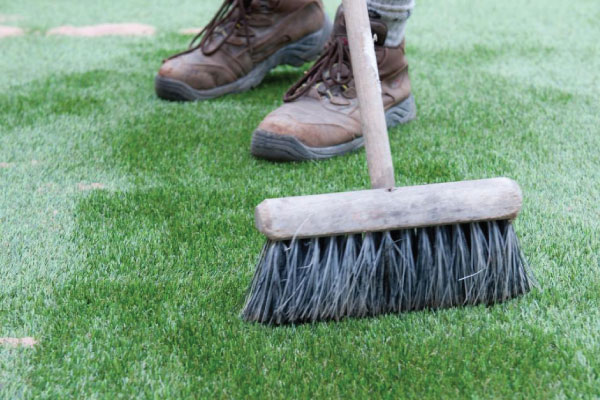Artificial Turf: The Solution to Soil Erosion and Dust

In this fast-moving society, homeowners are constantly seeking solutions that ease their existence while improving their exteriors. As concerns about soil erosion and dust storms grow, many are turning to a surprising alternative: artificial turf. This innovative version to traditional lawns provides not just an attractive green space, but also tackles a multitude of practical issues that come with maintaining natural lawns.
Why think about artificial turf for your garden? The advantages are numerous, ranging from lower upkeep to eco-friendly advantages. With artificial grass, residents can say goodbye to cutting, watering, and consistent weeding. Picture a lush, vibrant yard that requires minimal effort while appearing flawless year-round. https://dmlandscapedesign.co/services/artificial-turf/ increasing trend of fake lawns reflects a growing trend among individuals who desire ease of use, sustainability, and a beautiful outdoor environment. Whether you are dealing with heavy use zones, limited areas, or just want to elevate your curb appeal, exploring the options in artificial grass may be the best decision for your garden you ever choose.
Benefits of Artificial Grass
One of the most remarkable benefits of artificial grass is its low-maintenance nature. Homeowners can forego mowing, watering, and fertilizing, making it an desirable option for those with busy lifestyles. With synthetic turf, you can enjoy a beautiful lawn without the endless upkeep that real grass requires. This efficiency-boosting advantage allows homeowners to concentrate on enjoying their outdoor space rather than devoting weekends working on yard maintenance.
Artificial grass also offers significant environmental benefits. The water conservation are considerable, particularly in regions prone to drought. By opting for fake grass, homeowners can reduce water and diminish their impact on the environment. Additionally, without the requirement of fertilizers or pesticides, artificial turf reduces chemical runoff into local ecosystems, promoting a healthier environment for wildlife and mitigating the risk of allergies for family members.
Durability is another essential advantage of synthetic turf. It can tolerate heavy foot traffic, making it the best solution for those with pets. Unlike natural grass, which can become muddy, artificial turf retains its appearance year-round. Whether through extreme temperatures or heavy rain, fake grass remains intact, ensuring your lawn stays beautiful in all seasons. This endurance contributes to long-term savings, making it a prudent investment for homeowners looking to enhance their outdoor spaces.
Maintenance and Cost Effectiveness
One of the main pros of installing fake grass is its cost efficiency over time. While the initial investment may be greater than traditional grass, the long-term savings are substantial. Homeowners can expect to reduce expenses on water bills, upkeep tools, and garden services. With no need for trimming, fertilizing, or pest control, the recurring expenses associated with maintaining a natural lawn are avoided, making synthetic grass a wise financial decision.
Care is easy with synthetic grass, which is a significant benefit for busy homeowners. A fast spray with a hose to wash off trash is often all that is required to ensure it looks good. Unlike real grass, there is no concern about unwanted plants, discoloration, or the need for seasonal treatments. This simple maintenance benefit means more time relaxing in your outdoor space rather than tending to it, allowing for a less stressful experience.

Additionally, fake grass is designed to be long-lasting and strong, holding up well against a range of weather and heavy use. This dependability translates to less frequent replacements over the years, boosting its economic value. By choosing fake grass, homeowners can enjoy a lush lawn year-round with minimal effort, thus optimizing their expenditure and lessening the inconvenience traditionally associated with lawn care.
Environmental Impact of Synthetic Turf
The advantages of synthetic turf are gaining recognition as homeowners seek sustainable landscaping solutions. One significant advantage is the reduction of water usage. Conventional grass lawns require substantial irrigation, leading to inefficient water use, especially in regions susceptible to drought. By laying artificial turf, homeowners can save thousands of gallons of water annually, contributing to efforts to conserve water and reducing their environmental footprint.
Additionally, synthetic grass eliminates the need for toxic pesticides and fertilizers, which can contaminate the soil and waterways, leading to pollution. With less chemicals needed to maintain its appearance, synthetic grass offers a eco-friendly landscaping solution that promotes healthier ecosystems. This aspect is particularly beneficial for families with children and pets, who can enjoy safely on a surface free from harmful chemicals.
Another key factor is the longevity of artificial grass. Designed to withstand various weather conditions, synthetic turf can last for many years without the need for replacement. This long-lasting quality means fewer resources are needed for upkeep and replacement, minimizing waste over time. As more people choose synthetic turf for its eco-friendliness, it presents a modern solution for achieving aesthetically pleasing lawns while being ecologically sound.
